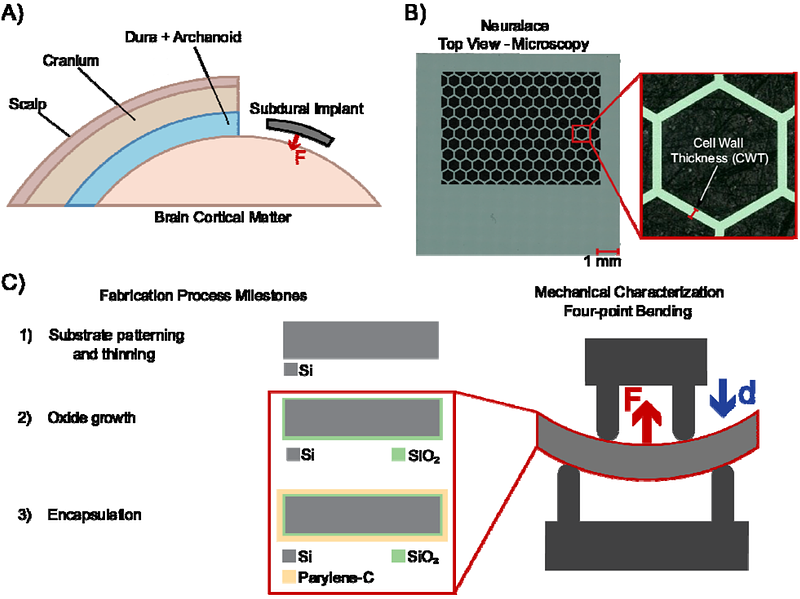Neuralace: Manufacture, Parylene-C Coating, and Mechanical Properties

Neuralace: Manufacture, Parylene-C Coating, and Mechanical Properties
Botero Torres, J. P.; Roberts, S. M.; Mackowiak, P.; Witham, N.; Selzer, L.; Srikanthan, B.; Negi, S.; Zoschke, K.; Solzbacher, F.
AbstractSubdural electrode arrays have traditionally been used for epilepsy monitoring and surgical planning. With the emergence of brain-computer interface (BCI) applications, these arrays are now being explored for chronic use, leveraging their ability to record subdural signals for neural decoding. Transitioning from short-term implantation in epilepsy monitoring to long-term use in BCIs requires advancements through consideration of the foreign body response to ensure long-term durability and functionality. Biocompatibility challenges, such as fibrotic encapsulation and reactive astrogliosis, highlight the need for conformal subdural implant designs that minimize mechanical stress on neural tissue. This study investigates the mechanical properties of the Neuralace, a novel ultra-thin, high-channel-count mesh-type surface grid. We characterized the stiffness of the silicon-based interposer electrode meshes and evaluated the effects of various geometric configurations and polymeric encapsulation layers on the mechanical performance. Using a full factorial design of experiments framework and a custom low-force four-point bending setup, we identified the design factors that impact the stiffness of Neuralace structures. The results showed highly consistent stiffness measurements. The stiffness values of Neuralace structures ranged from 2.99 N/m to 7.21 N/m, depending on the cell-wall thickness (CWT) of the lace, the orientation angle, and whether the structures were encapsulated with parylene-C (PPXC). Orientation and CWT had the largest impact on the stiffness of the structures, while the effects of PPXC encapsulation were statistically significant but more subtle. The stiffest Neuralace configuration is expected to exert forces approximately 10 to 100 times lower than commercially available subdural implants would when conforming to the radius of the smallest anatomical gyrus. This work demonstrates the feasibility of tailoring the mechanical properties of Neuralace to improve its suitability for chronic neural implantation, providing insights for future design iterations and conformable implant development.